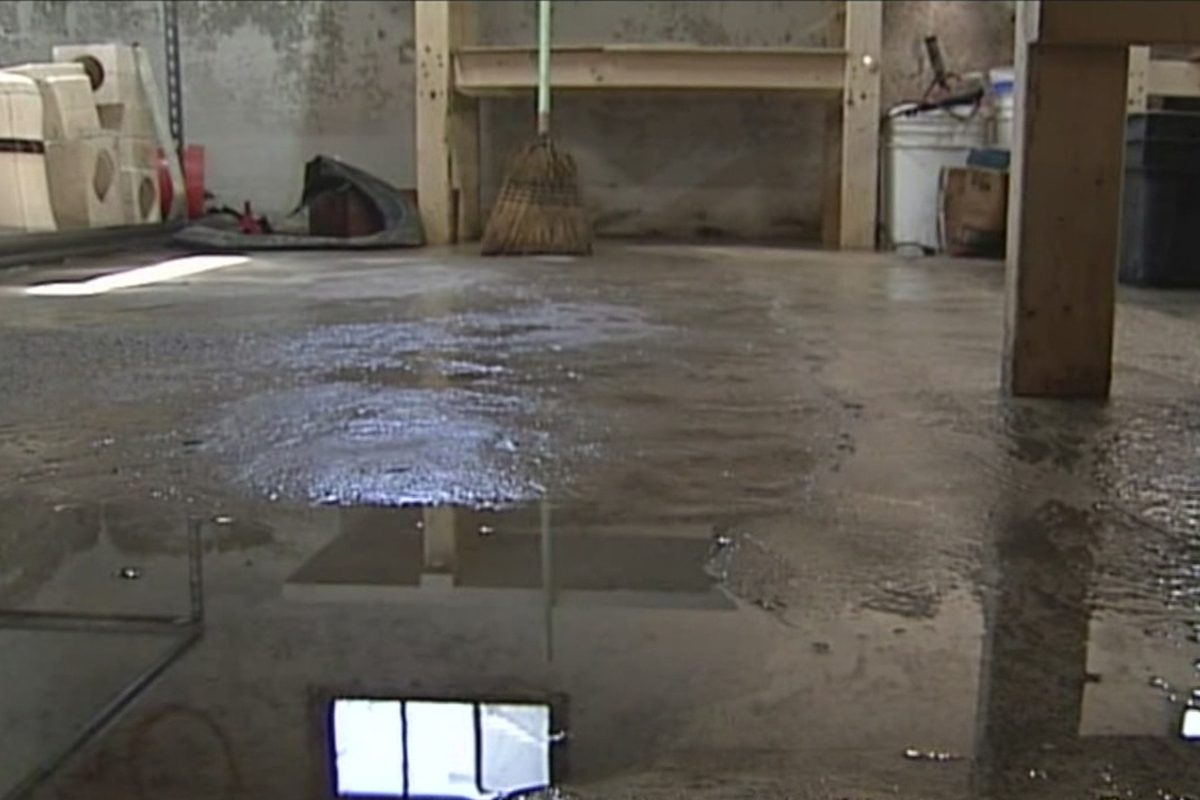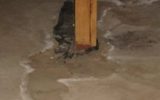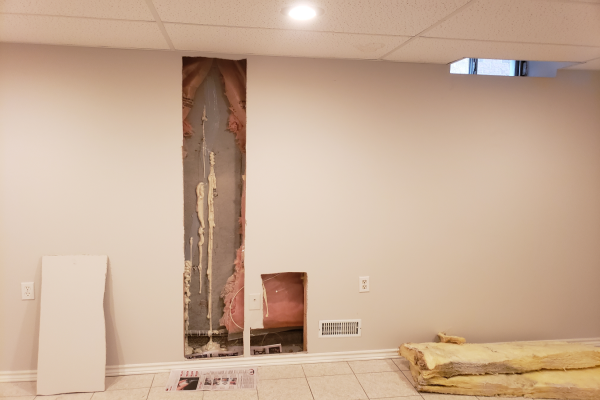Read this page and you will recognize basement leaks like an expert!
Arguably the most common sign of a basement leak is your visual observation of water on your basement floor, a damp carpet, or for hardwood and laminate flooring, swelling and buckling of the floorboards. You would be amazed at how many people initially attribute a wet basement carpet to a child having spilled a drink or the cat peeing on the carpet!
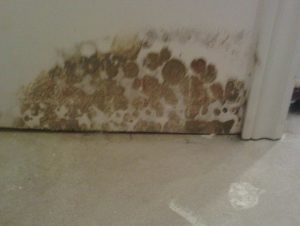
Moldy drywall is a sure sign of a leak into the basement
In discussing the signs of basement leaks there are obviously differences between what is observable in finished basements and what is observable in unfinished basements. In a finished basement there are certain visual clues that enable you to determine whether or not you have a basement leak; similarly, there are clues which are only visible in unfinished basements. Let’s take a look at finished basements first.
Basement Leaks in a Finished Basement
In a finished basement, most basement leaks will be discovered in the form of wet carpets, buckled wood or laminate flooring, discoloured baseboards, and visible mould on the lower part of drywall (typically small black or brown spots at the bottom of the drywall).
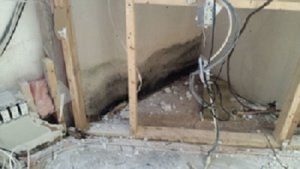
Moldy drywall is a common sign of a basement leak
Contrary to popular belief, basement leaks do not usually result in wet or stained drywall except close to the very bottom. This is because the drywall is usually several inches away from the foundation wall itself due to the wall framing; therefore, water attributable to a true basement leak runs down the wall and pools on the floor before a puddle becomes visible or before the drywall has an opportunity to wick the water, or the paint on the baseboards can discolour. Quite often, people discover basement leaks when they step on a carpet in areas in which they do not typically walk.
Basement Leaks in an Unfinished Basement
In an unfinished basement, 95% of the time, a true basement leak will cause discoloration or staining on the foundation wall itself. In addition, visual evidence of dried puddles, sediment or mineral stains, and water streak marks on the floor are usually observable.
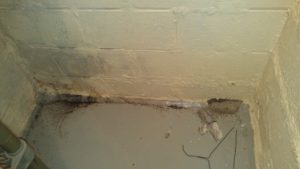
Staining almost always accompanies a basement leak
In the absence of the obvious signs that we have discussed above, there are other signs that you have a basement leak. When we refer to a basement leak, we are not necessarily saying that the foundation walls require waterproofing. What we are saying is that there is water in the basement; this water should not be there and water can enter your home from many places within the building envelope.
High Levels of Basement Humidity
Acknowledging that there are many potential sources of basement leaks, it is clear that a homeowner can make one or more observations revealing the existence of a basement leak. In some cases a basement leak will be suspected when a high level of humidity or a musty odour is observed in the basement. The measurement device to be used to establish if there is excessive humidity in your basement is a hygrometer. Hygrometers are often incorporated within the newer generation of basement dehumidifiers. Given that water vapor in the soil beneath a home will wick through a basement floor and through basement walls on an ongoing basis, we recommend the use of dehumidifiers in all basements. According to Health Canada, the recommended relative humidity in your basement should be in the 30% to 45% range; 30% in the winter and 45% in the summer. Basement dampness is also a symptom of infrequent air exchange in a basement. Basement windows are seldom opened and therefore there is very little natural air exchange, unlike the upper floors of your home where you frequently open your front door, your patio door, windows throughout the home, and even the exhaust vent above your stove and exhaust fans in your bathrooms. Therefore, high humidity and the typically accompanying musty smell in your basement may be solely attributable to the high relative humidity of the air in your basement. If the level of humidity and the musty smell in your basement changes dramatically particularly during the spring or the fall, then you may be detecting one of the signs associated with a basement leak.
Other Signs of Basement Leaks
Visible mould on drywall or paneling, wet carpets and swollen and discoloured baseboards are dead giveaways for basement leaks; a less common sign of a basement leak is rust. When there is significant water in the basement, appliances in your basement are often rusty at the bottom; similarly one may observe corrosion of the metal support posts located throughout the basement.
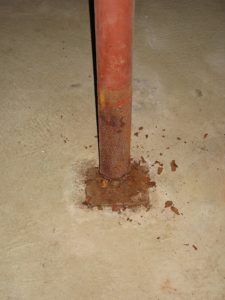
Water beneath the floor has caused this support post to rust
In some instances you will notice discoloration in the tiles of a drop ceiling. Staining on a drop ceiling is always the result of the presence of water. A basement leak is almost never responsible for such damage within your home. Typically, damage in the ceiling is attributable to plumbing leaks, condensation on cold ductwork, or roof leaks as water is actually traveling down the framing of the walls of your home. Establishing the root cause of this type of basement leak absolutely requires the use of diagnostic equipment.
Basement Leaks Aren’t Always Basement Leaks?
Finding water in your basement does not necessarily mean that you require basement waterproofing work. What is required before undertaking any waterproofing work is an inspection to determine the actual source of the water in your basement. Locating the exact source of a basement leak in a finished basement often requires the use of diagnostic equipment. Basement leaks in an unfinished basement are easily diagnosed visually by experienced basement waterproofers.
Note: If there is any reason to believe that water ingress into your basement originates from above the foundation (such as a patio door or roof leak), proper investigation is crucial.
Want even more detail? Checkout our page on Typical Sources of Basement Leaks

